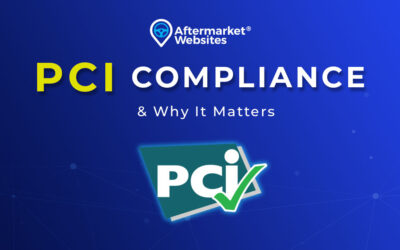Google, a global titan of Web searches, consistently handles the majority of online queries for business and product sources. If you’re a local business owner, then, it’s pretty crucial that you do everything you can to ensure sure you show up on Google’s radar. One of the best ways to do that is by claiming your Google My Business listing and using the tools there to connect with existing and potential customers.
What Is Google My Business and Why Should You Care?
Google My Business is Google’s online directory for local businesses. It has had many names and identities over the years (Google Local, Google Places, Google+, etc.), but Google has now consolidated all those various dashboards into one platform: Google My Business. When consumers search for goods and services online using Google—and make no mistake, this is overwhelmingly how people shop today—they are treated to business listings matching their search parameters. If your business isn’t listed, customers not only won’t see you as an option but also will be diverted to one of your competitors. That is a disastrous outcome for a local business.
If you don’t know your business’s status within the directory, go to Google.com/business, click the “Manage now” button, and follow the prompts. You can either search for your business listing and claim it if it exists, or you can create one from scratch. Google might have auto-generated a listing for you (in an unknown state of correctness) or you might not be listed at all. If you find duplicate listings, mark them as closed. Either way, this is your first important step.
Knowledge Panels and Local Packs
If you’ve ever performed a category search in Google to find a local business, you are familiar with what these are even if you didn’t know it. For example, if you search for Truck Accessories in Bristol, TN, you will be shown a map and three store listings. That entire presentation is called a knowledge panel; the first three businesses shown are the local pack. Clicking on “View all” expands the knowledge panel to show more listings, but it’s obviously advantageous to be among the first three seen. These listings are drawn from Google My Business profiles based on what Google algorithms determine the best matches to be.
Google My Business Basics
Curating the information on your Google My Business listing will pay big dividends in terms of getting you on the knowledge panel for your business categories, and it doesn’t take a lot of time. Here are five quick highlights:
- Accurate information. Make sure your business name, address, phone number, and website URL are included and correct. (And if you need a website, consider Aftermarket Websites®, which exclusively serves local automotive aftermarket businesses.) Accuracy and completeness factor into Google’s ranking system, and a correct address and phone number are essential in allowing customers to find you using Google Maps and quickly connect via click-to-call. There is even an official process to verify your location information for enhanced results.
- Business description. Let people know who you are and what products or services you offer. Include keywords that customers trying to find you would be using to search, including the major brands, categories, products, and services you provide.
- Carefully categorize. Be as specific as possible when selecting the primary category that best matches your business from among the drop-down choices. You can add secondary categories, but this primary category should be the one that BEST describes your business and what you want to be found for overall. Try to stay focused: adding too many secondary categories can muddle your business profile in the eyes of consumers.
- Hours of operation. If you maintain a physical store, it’s crucial that customers know when they can expect to do business with you. Inconsistent or ambiguous hours can be incredibly frustrating, especially for people with whom you don’t have an established relationship. You can even note holiday hours.
- Add media. Photos and videos are incredibly efficient and dynamic ways to present your business to potential customers.
Covering these bases can vault your business ahead of competitors who haven’t put in the effort. If you want to take it further, however, you can engage more deeply to solidify your place near the top of your local directory.
Reviews
Reviews are important not only because they build social credibility and trust but also because they’ve become a huge ranking factor for Google’s local listings.
First, reviews affect purchasing decisions. Without realizing it, I’ve begun to consider only those businesses that have a solid bank of reviews. And I’m not alone. According to a recent PowerReviews study, 92% of consumers will hesitate to buy a product if there are no reviews left by customers. If you need to build your review bank, invite existing customers to leave a review.
Second, if your listing is getting reviews, you should manage them to show engagement. Respond to every review. If positive, thank the customer. If negative, respond graciously at a minimum and invite them to contact you to help resolve matters to their satisfaction if that’s appropriate. Either way, this demonstrates that you care about your customers’ experiences. Whatever you do, don’t publicly escalate a negative review; you will always come out looking the worse.
Appointments
If you’re a business that schedules customers, a new Google My Business feature lets you display a calendar for scheduling purposes and booking directly through your listing.
Posts
The Google My Business version of a blog, posts are a new feature that can improve the ranking of your business listing. You can talk about upcoming events or specials, new products in stock, staff updates, tips for your hobby, and more. This engagement not only keeps your listing active and improves your SEO but also can demonstrate that you are a local leader in your category.
Direct Messaging
Customers can now send you a text message through Google My Business, which you can set to come through a text-capable phone line. This option can help those consumers who prefer to text chat rather than call or email reach you in a way that’s convenient and comfortable for them. And if you respond instantly to help them with their need or problem, you just might earn their business.
There are also tools that will show you how your listing is performing (e.g., Insights), but if you take care of the foundational elements discussed here, you will have the advantage on any local competitor who hasn’t. For more in-depth information on these and other Google My Business topics, visit the Google Help Center.




